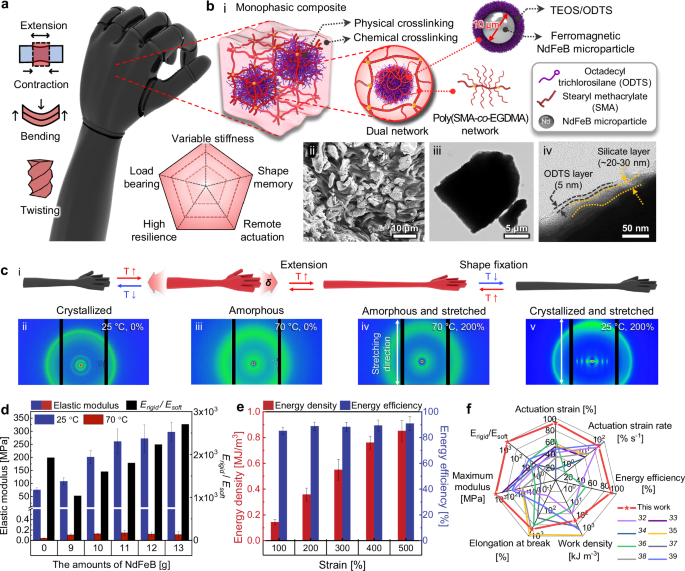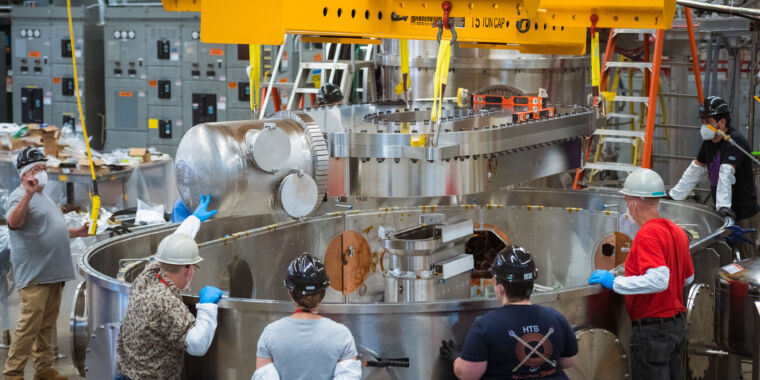
Multifunctional Magnetic Muscles for Soft Robotics
Nature Communications volume 15, Article number: 7929 (2024 ) Cite this article
Despite recent advancements, artificial muscles have not yet been able to strike the right balance between exceptional mechanical properties and dexterous actuation abilities that are found in biological systems. Here, we present an artificial magnetic muscle that exhibits multiple remarkable mechanical properties and demonstrates comprehensive actuating performance, surpassing those of biological muscles. This artificial muscle utilizes a composite configuration, integrating a phase-change polymer and ferromagnetic particles, enabling active control over mechanical properties and complex actuating motions through remote laser heating and magnetic field manipulation. Consequently, the magnetic composite muscle can dynamically adjust its stiffness as needed, achieving a switching ratio exceeding 2.7 × 10³. This remarkable adaptability facilitates substantial load-bearing capacity, with specific load capacities of up to 1000 and 3690 for tensile and compressive stresses, respectively. Moreover, it demonstrates reversible extension, contraction, bending, and twisting, with stretchability exceeding 800%. We leverage these distinctive attributes to showcase the versatility of this composite muscle as a soft continuum robotic manipulator. It adeptly executes various programmable responses and performs complex tasks while minimizing mechanical vibrations. Furthermore, we demonstrate that this composite muscle excels across multiple mechanical and actuation aspects compared to existing actuators.
Soft actuators and artificial muscles are gaining prominence as indispensable components for a wide range of applications, including soft robotics1,2, exoskeletons3, wearables4,5, and biomedical devices6. Constructed from soft materials, these actuators provide inherent compliance, enabling their usage in uncontrolled and complex environments without requiring complex control algorithms1,6. However, soft materials commonly used in soft-bodied devices, such as silicones7,8 (e.g., polydimethylsiloxane, Ecoflex, or Dragon Skin) and hydrogels9, have limited mechanical properties. Their inherent softness restricts load-bearing capacity, force output, and resistance to fatigue or damage10. Additionally, the elastic nature of these materials results in undesired vibrations, posing challenges for the accurate control of specific operations11.
Leave a Comment
Related Posts





















/cdn.vox-cdn.com/uploads/chorus_asset/file/19411304/shollister_191126_steam_controller_103959__2_.jpg)



